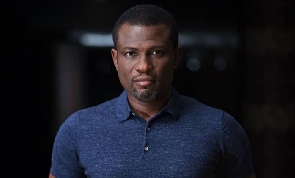In previous articles, I perfunctorily analyzed the models of Thailand, India and China. The main distinguishing feature of Thailand is its commitment to empower the rural population by funneling credit to the masses. The government however concentrates on the provision of infra-structure. China is focusing on foreign direct investment and exploitation of cheap but highly productive labor to be the manufacturer of consumer durables to the world. India is using IT and outsourcing. Now is the turn of Ireland, the Celtic tiger.
Ireland fundamentally is not unlike Ghana in many respects except in one singular area. Both countries, until quite recently, were considered to be having developing economies. The former has shed off that description. It took about two decades for Ireland to earn this promotion. Ireland is now the second richest country in the EU.
In the case of Ireland the population went through some severe belt tightening that meant every one had to sacrifice. They then followed that with a plan to upgrade the education of its entire work force and a strategy to recruit and induce as many global high-tech companies and researchers as possible to locate in Ireland. The Irish had a plan. They focused on the plan. They mobilized business, labor and government around a common agenda. They are playing the offense. It is yielding the desired results.
Some basic statistics about Ireland: Population 3.75 million (2000); Unemployment decreased from 15.7% in 1993 to 3.6% in 2001; Annual Average Change in Gross Domestic Product (GDP) 1993-99: 9%; Annual Average Change in Gross National Product (GNP) 1993-99: 8%. The population of Ireland has increased by 240,000 (7%) to 3.75 million since 1990, with net migration into Ireland accounting for over a quarter (64,000) of this increase- a reversal of an age-old trend in which Ireland had been a source of labor supply for almost every country under sun. Until quite recently the features of the Irish economy were like that of most developing countries. It was a natural-resourced/agricultural based; inward-looking and narrowly export based. The economy, since the 1990?s has evolved into a high-tech, knowledge-based and export-driven. Ireland economy is one of the most open trading economies in the world. This miraculous but by no means magical transformation did not happen by chance. Irish leaders like those of China, India, Malaysia and Thailand were able to weld strength and strategies to thoughtfully plan ahead and sacrifice today for a big tomorrow.
The engines of growth that Ireland adopted were manpower development and training, trade and foreign domestic investment (FDI). There was conspicuous absence of aids and grants in this equation. African countries like our own mother land place premium on grants and aids. What our leaders fail to realize is that no community has developed through the philanthropic spirit of outsiders. Because of the premium we attached to philanthropic spirit of others we have been grotesquely attached to the apron springs of donors.
Ireland massively invested in the tools and skills needed to compete in the digital economy. The end product of this investment is the availability of plentiful supply of well-educated and skilled young people entering the labor force annually. This placed Ireland in a strong position for e-business and technology projects. The proportion of the population less than 25 years of age in Ireland is higher than in any other EU country. The quality of the labor force reflects the high value attached to education and to the acquisition of skills and qualification within Irish society. It also reflects a long-run emphasis in public sector policies in providing (free) access to education opportunities beyond primary school level. With the availability of mass of educated and highly skilled labor force, Ireland could have decided to export them as used to be the practice of old. But progress is impossible if a society continues to do things the same way it has always done. Ireland decided to utilize the population domestically to produce for the global economy. The Irish leaders did not pamper to nationalistic instincts by urging the educated population to stay home as it seems to be the only known option to our leaders in Africa.
When Ireland achieved independence from the UK in 1922, it had virtually no industrial base just like Ghana at 1957. Like Ghana, Ireland?s economic fortunes were closely tied to agriculture, which employed over 50% of labor force. During the first 10 years of post Ireland operated free-trade policy. In 1932 in an attempt to increase employment and reduce emigration, Ireland turned to protectionism. Unlike the selective protectionist policies favored by Japan and South Africa, Ireland?s protectionist policies just like Ghana?s of in the Nkrumah?s era were indiscriminately applied across all sectors of the economy. Protectionism failed to nurture an export capability for the existing small indigenous domestic industries. If anything, the policy allowed inefficiencies in production to go unchecked. In early 1960?s tariffs and quotas were finally removed. It seemed the umbilical cord of Irish industries was cut when the protectionist cover was removed. Markedly increased emigration and unemployment resulted. The failure of Irish industries to survive engendered a different thinking by the political leaders. The policy of ?industrialization by invitation? was born.
The policy focused on attracting overseas investment through a system of financial and tax-based incentives. For example, non-payable grants were provided to cover the cost of land and building, while in an attempt to boost exports and to create an indigenous export capability, profits from export sales were declared exempt from corporation tax.
Grants and favorable tax incentives coupled with the presence of the large young educated and computer-literate work force magnetized the internet technology (IT) community. They came in waves. The rest is history.
As Ireland?s IT industries became more prominent, many of the courses provided in the third level educational institutions placed an increased emphasis on engineering, computer science and other technical degrees. With the lapse of time Ireland?s educational system was successfully adapted to the needs of its burgeoning industrial sector. Ireland now boasts of being the second best educational system in terms of responsiveness to a competitive economy. Ireland thus now has the manpower and the products. For trade to prosper, it needs in addition peace and infrastructure.
Being a democratic and a member of the EU, assured Ireland of the peace and harmony. It worked on the infrastructure. The government initiated policies conducive to trade-dependence economy. The polices were aimed for non-restrictive regulatory framework in respect of capital flows; support an extensive range of trade-facilitating and investment-supporting double-taxation agreements with other countries; and promote a well developed and competitive financial services industry that is also trade-supporting. Public policy also accords a high priority to the development of an internationally competitive logistics sector-encompassing infrastructure, a high level of services to firms engaged in international trade and the incorporation of service-enhancing and productivity-increasing information technology innovations within the sector.
As the above palpably reveals it is unlikely that Ireland?s economic success would not have occurred through market forces alone. Instead it points to a deliberate, committed and sustained intervention by successive Irish governments. The key words here are deliberate, committed, sustained and intervention. These features are woefully absent in the body-politics of Ghana. Our leaders emphasized on grants and aids because such liberal infusions of aids and grants fall easy prey to our corrupt politicians. They and their bureaucrats siphon such funds to Western economies as fast as the West hands it to them, re-investing 40 per cent of the continent?s wealth overseas- a large portion of it in Swiss bank accounts.
China, India, Ireland and Thailand have all used different approaches to grow their economies in recent memory as my earlier articles in this passage to prosperity indicate. Ghana needs not invest the wheel. We only have to adopt and adopt these strategies to suit our unique socio-economic environment. Our government can make credit readily available to the rural masses as Thailand is doing. Ghana can focus on IT as India and Ireland seem to be doing. The China example of being the manufacturer of consumer perishable to the world seems could be scaled down if we target the West African sub region. Any of these strategies need an educated and efficient labor force.



















